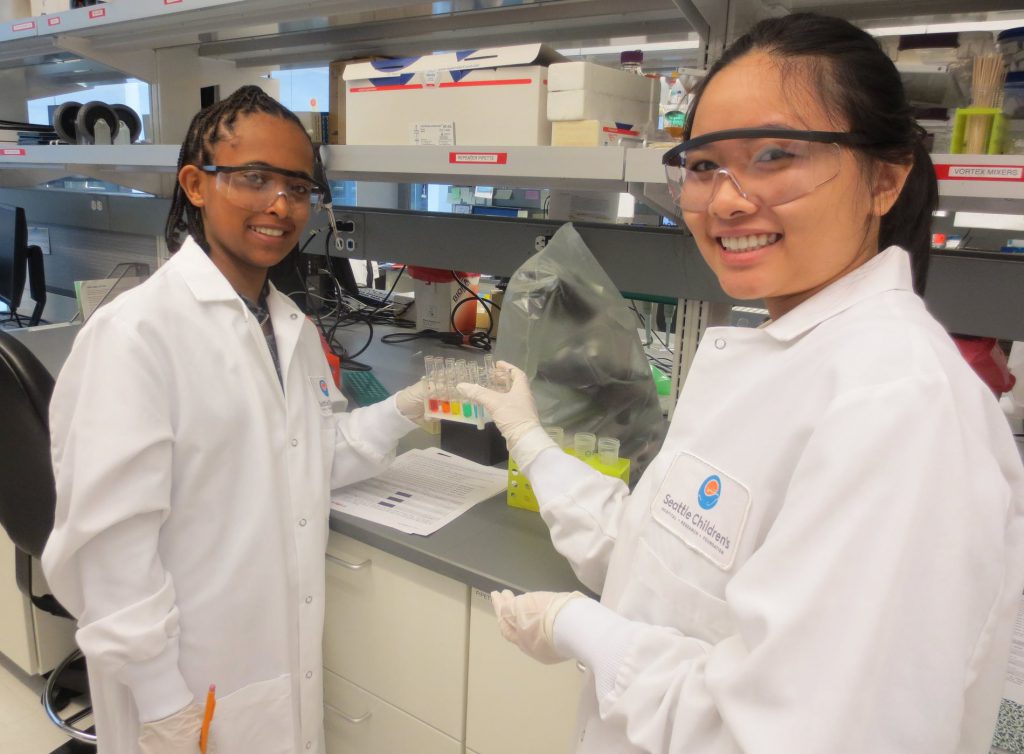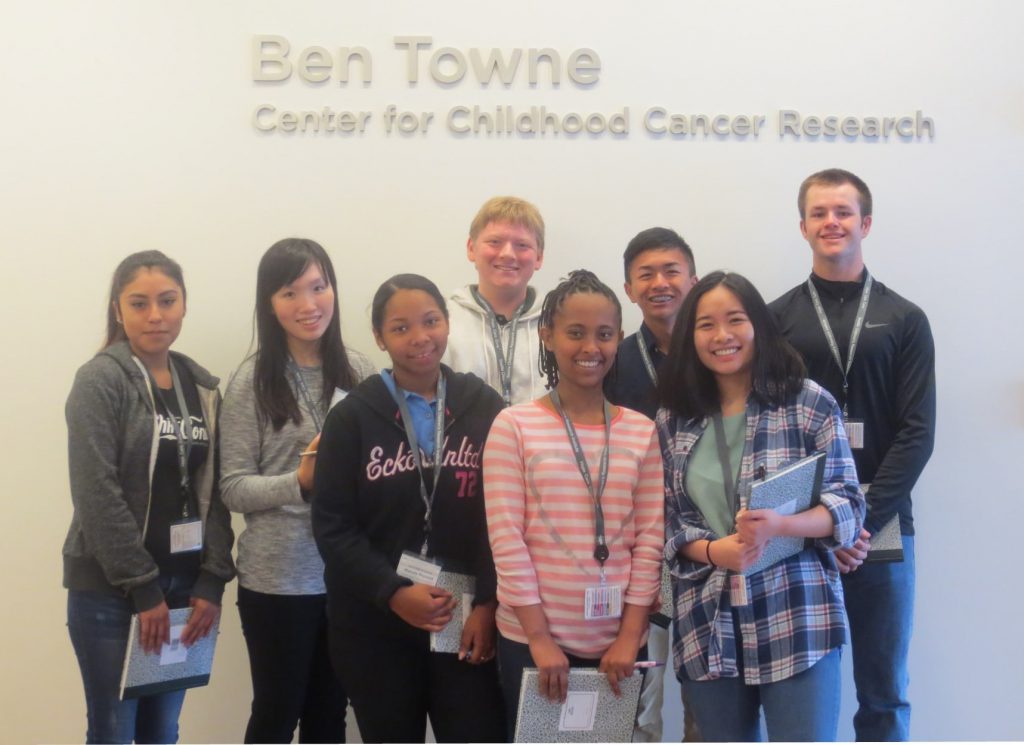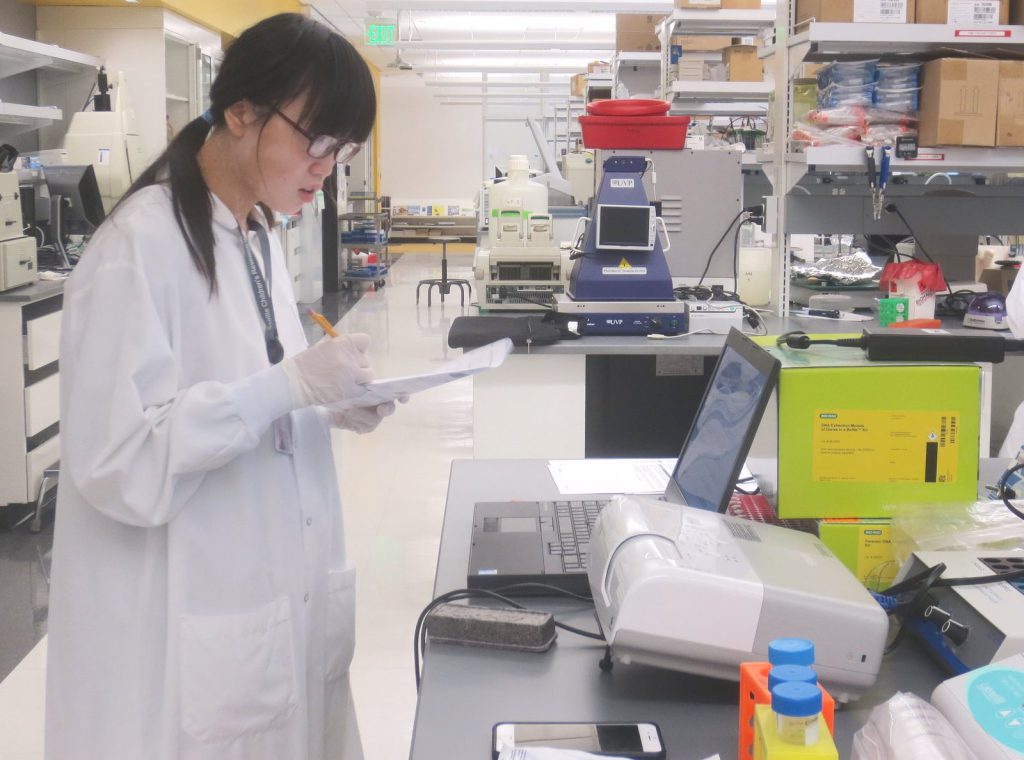
At Seattle Children’s Research Institute, doctors and researchers work every day to develop treatments and cures for childhood diseases. With the launch of the Seattle Children’s STEM internships for high school students this year, young people became scientific investigators themselves, working side by side with researchers in the lab.
As part of the new program, eight high school students from around Western Washington learned to use lab equipment, met with mentors and gained valuable research experience.
“I got a good snapshot of what research looks like,” said Kevin Nguyen, 18. “We learned all the nitty-gritty details, like how to maintain a pristine lab notebook, why it’s important to label your test tubes and the developmental phases of research — going from clinical trial to FDA approval.”
The two-week internship program, developed by program manager Dr. Becky Howsmon, is the latest addition to the Seattle Children’s Science Education department’s growing list of educational opportunities.
Getting kids excited about science
One of the purposes of the science education programs is to get kids excited about science, possibly leading them to pursue careers in the fields of science, technology, engineering or mathematics (STEM).

“Statistics show that for every three open STEM jobs, there’s one trained worker,” said Dr. Amanda Jones, director of Seattle Children’s Science Education program. “Those aren’t just research jobs — it includes all kinds of STEM jobs, like bioengineers and computer programmers. We want young people to think broadly about the different STEM careers available and hopefully find one that suits them.”
In addition to lab experience, the interns listened to guest speakers and took training in job search and interview skills.
The internships were set up as a two-week pilot program in partnership with the Highline School District in Burien, Washington because there was an existing relationship with Seattle Children’s.
“We’ve worked with the Highline School District on other programs and decided to partner with them on the pilot because of their strong commitment to providing opportunities for students,” said Jones.
The eight students selected for the internship were recruited from three different sources: Nguyen was part of the Seattle Youth Employment Program; five were students from the Highline School District; and two came through The Links, Incorporated, a program that offers professional development opportunities for young African-American women.
Spending time on the (lab) bench
The interns spent each afternoon doing real research with staff from different areas of the research institute: Dr. Krista Geister, Center for Developmental Biology and Regenerative Medicine; Craig Schindewolf, Center for Global Infectious Disease; Kayla Betz, Ben Towne Center for Childhood Cancer Research; and Dr. Matthew Brodsky and Dr. Andrew Walker, Center for Integrative Brain Research.
The research, and the effect it will have on children’s health, was real.
“I helped my mentor extract T cells from the blood of cancer patients and run it through this machine called a flow cytometer that sorted out a bunch of the cells we were looking for,” Nguyen said.
The interns weren’t the only ones who learned and grew from the program. It was also meaningful for the mentors.
“Our main goal was to get them excited about science and expose them to things they might not have access to otherwise,” said Betz. “We talked about how failure is a normal part of science. In high school, you do experiments with specific instructions so things work every time — and that’s not how it is in the real world. Things go wrong or don’t work all the time and you have to find new methods or solutions.”
Planning for the future

By all accounts, the first year of the internship was a success, and administrators are already looking ahead to the 2017 internships.
“We’re seeking funding so we can continue the program and grow it next year,” said Jones. “With a longer program, we could spread in-depth instruction out and give the students more time with the mentors.”
Nguyen was the only intern who has already graduated from high school and the other interns are now in their senior years. He realized that even though his major at the University of Washington, industrial engineering, does not seem like it would be closely linked to medical research, the Seattle Children’s internship helped him realize how a vast variety of degrees can be applied in STEM careers.
“This has changed my perspective so much,” he said. “As an engineer, you think ‘I want to work at Boeing or Amazon or some big private company.’ I now realize I don’t necessarily have to go that direction, and I’m thinking about what I can offer Seattle Children’s as an engineer.”
Resources
- KING5 Healthlink, STEM program gives high school students a step up in life
- Seattle Children’s Research Institute
- Science Education Department, Seattle Children’s Research Institute

